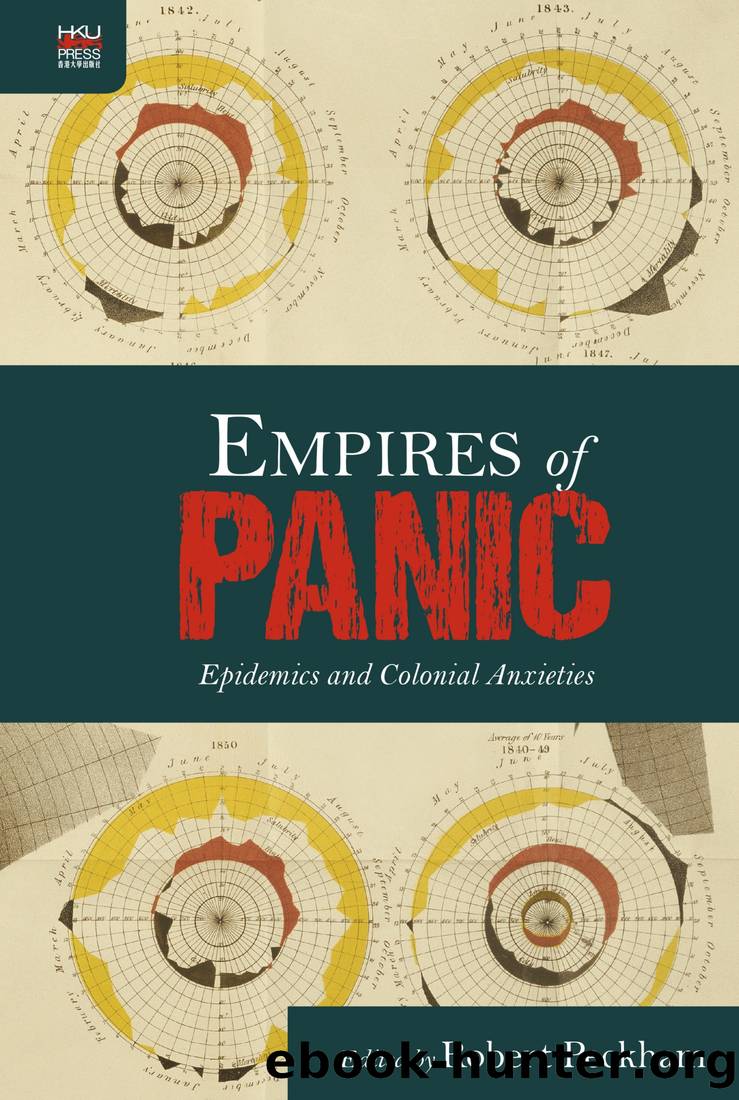Empires of Panic by Robert Peckham

Author:Robert Peckham [Peckham, Robert]
Language: eng
Format: epub
Tags: History
ISBN: 9789888313600
Publisher: HongKongUP
Published: 2015-01-14T06:00:00+00:00
The Want of Panic
One explanation for the widespread panic in the late 1890s and early 1900s and its virtual absence in 1918â19 thus lies in the very different character of the two diseases, plague in the first instance, influenza in the second. But that is not the only reason why this dog did not bark. No less significant was the lack of interventionist measures against influenza by the government and local public health authorities as well as a changed attitude on the part of the public, or at least of those who influenced public attitudes, toward Western medical and sanitary measures. As already indicated, since the early plague years the government and its public health experts had come to the view that aggressive intervention was politically unwise and counterproductive in India and that efforts instead had to be made to persuade and educate the public into a more enlightened attitude. But it was not just a matter of state policy. By 1918, the medical and sanitary services in India had been depleted by four years of war and the loss to military service of senior medical personnel. The epidemic left the authorities with no convincing strategy for combating influenza other than to recommend that people keep away from work once they fell ill, avoid public places, and try to rest and eat light but nourishing food. Some temporary hospitals were set up and travelling dispensaries mobilized. A great number of leaflets were printed and distributed in English and the vernaculars advising people what they should do, but the kinds of drastic measures used against plague in 1896â97 seemed to have no relevance, and there were, anyway, no time or resources to deploy them even if they had seemed advisable.51
It helped, too, that even though it followed the same route once it arrived in India, spreading from Bombay outwards to the north and center of India, the 1918â19 influenza epidemic, unlike plague, arrived in India from the West rather than the East. Since Europe had singularly failed to do much to prevent or contain influenza what could India possibly hope to do? By contrast, plague, in moving west from Hong Kong to India, seemed to demand drastic and urgent measures to save the West from an eastern epidemic invasion. Plague in India in the late 1890s attracted a host of investigative commissions, including foreign delegations from Germany, Austria, France, Russia, and Turkey. Intensive local research in Bombay especially was also prompted by the appointment of a Plague Research Committee and the arrival of the Plague Commission from London. The meteoric rise of bacteriology as a laboratory-based medical specialty in India and the creation of a separate bacteriology section of the state medical service owed much to the timing of the plague epidemic and its perceived political and sanitary importance. Influenza, for all its catastrophic mortality, produced a far smaller response. Only one medical officer (R. H. Malone of the Indian Medical Service) was deputed by the Government of India and the
Download
This site does not store any files on its server. We only index and link to content provided by other sites. Please contact the content providers to delete copyright contents if any and email us, we'll remove relevant links or contents immediately.
Vicious, Elegant Bastards by Hyams Jacky;(183)
A Preface to Politics by Walter Lippmann(122)
Tales from Two Cities by Dervla Murphy(111)
On the Burning of Books by Kenneth Baker(111)
Empires of Panic by Robert Peckham(108)
Simple Living in History by Various Authors Samuel Alexander Amanda McLeod(79)
Mobility and Biography by Sarah Panter(74)
Stories from the Serat Centhini by Santoso Soewito;Pringgoharjono Kestity;(73)
The Oxford Illustrated History of Science by Iwan Rhys Morus(72)
Social Orders and Social Classes in Europe Since 1500 by M. L. Bush(71)
Convict Orphans by Lucy Frost(65)
Tunes on a Penny Whistle: A Derbyshire Childhood by Doris E Coates(61)
Louisiana's Sacred Places by Deborah Burst(51)
Peasants Making History: Living In an English Region 1200-1540 by Christopher Dyer(26)
Volatilization of oxides during oxidation of some superalloys at 1200°C by Unknown(26)
